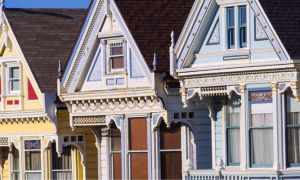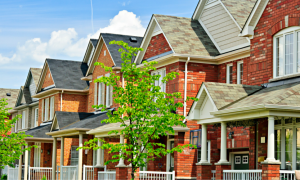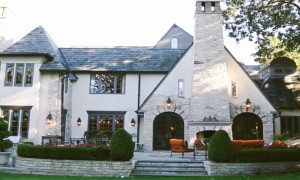The housing market suffered a rare setback in July as sales of existing homes dropped for only the second time in the past 21 months.
Sales fell 1.6% compared with 12 months earlier, according to the latest report from the National Association of Realtors (NAR), and dropped 3.2% from June’s strong numbers.
The sales decline, however, was due less to a fall-off in demand than it was to a shortage of supply, according to NAR’s chief economist, Lawrence Yun. National inventory of homes for sale has fallen 14 straight months compared with 12 months earlier.
“Severely restrained inventory and the tightening grip it’s putting on affordability is the primary culprit for the considerable sales slump throughout much of the country last month,” he said. “Realtors are reporting diminished buyer traffic because of the scarce number of affordable homes on the market, and the lack of supply is stifling the efforts of many prospective buyers attempting to purchase while mortgage rates hover at historical lows.”
The shortages of suitable housing has encouraged the nation’s home builders to step up their efforts. The National Association of Home Builders (NAHB)/Wells Fargo Housing Market Index, a gauge of industry confidence, registered a two percentage point gain earlier in August to reach 60: That meant many more builders judged the housing market was good rather than poor.
The builders’ confidence was underscored earlier this week by a report from The Commerce Department and the Department of Housing and Urban Development (HUD) that estimated a 31% year-over-year jump in sales of new homes. The builders cited a solidifying national economy with improving job prospects and wages that have led to an increase in household formation for their optimism.
Most of those new households purchase existing homes, and that’s what the NAR report focused on. One big factor that has bolstered demand for existing homes is continued rock-bottom financing costs. Thirty-year, fixed-rate loans issued in July averaged about a 3.44% interest rate, a half point below the already bargain rates of 12 months earlier.
Not only are mortgages cheap, they’re easier to get. The Federal Reserve’s survey of Senior Loan Officers revealed that banks had loosened up standards for residential mortgages issued during the three months ended in July.
Millennials taking charge
Perhaps the biggest reason for heightened market confidence, though, is that young adults, who have lagged in home buying, are stepping up to the plate again.
The Great Recession had taken a heavy toll on the homeownership aspirations of that generation. According to Fannie Mae, the government sponsored mortgage giant, homeownership for households headed by 25- to 34-year-olds dropped to 36.9% in 2014, 10 percentage points lower than in 2006. That number may even understate the case since many members of the age cohort had not even formed their own households much less purchased homes. The dearth of young buyers has been reflected in NAR monthly reports over the past several years with first-time homebuyers accounting for a much lower percentage of purchases than in the past.
Now, however, “Millennials and first-time home buyers in general are coming back to the market again,” said Doug Duncan, Fannie Mae’s chief economist.
And, he added, the 30- to 35-year-olds are emulating past generations by following a well-trod path to the suburbs. Some industry analysts had been positing that the Millennials had radically changed their lifestyle choices, preferring central city locations to the three-bedroom, two-bath house in the suburbs. Not so.
“They’re getting married, having kids and moving out of the city center,” said Duncan. That spells opportunity for the housing industry because development is usually cheaper and easier as builders move out from the central core. They can build more affordable housing for those new home buyers in Westchester County, N.Y., Fairfax County, Va, Orange County, Calif., or innumerable less expensive suburbs all around the country than they could in the high-cost city centers.
Millennials are also amping up demand for the offerings of aging empty nesters looking to sell so they can downsize from their family homes or retire to another area.
Besides low supplies, there are additional speed bumps for home sales. For one thing, salaries have still not bounced all the way back to pre-recession levels. Millennials earn an average of $6,000 less annually in real dollar terms than the same age cohort did 10 years ago. And lenders are still significantly more tight-fisted than they were during the housing boom years when, it was said, anyone who could fog a mirror could obtain a mortgage.
According to Duncan, there’s been enough solid job growth that pressure has been exerted on many human resources departments to sweeten their job offers. As a result, income has begun to show some gains. With more young Americans working and making more money, they finally have the means to follow their dreams of homeownership again.
Prices elevating
Prices are running up much faster than inflation. Nationally, the median home sold for $244,100 in July. That marked the 53rd straight month of year-over-year price gains.
The West was the only region that reported a month-over-month sales increase in July, but, at an annual rate of 1.23 million, sales were still off 0.8% from July, 2015. Sales in the Midwest were flat year-over-year, while the South’s sales came in at negative 1.8%. The Northeast recorded the biggest month-over-month drop at 13.2%, which led to a 5.7% year-over-year decrease.
Here are year-over-year sales changes by region:
| Region | Home sales | % Sales change year-over-year | Median home price | % Price change year-over-year |
| Northeast | 660,000 | -5.7% | $284,000 | 3.3% |
| Midwest | 1.28 million | 0% | $194,000 | 5.0% |
| South | 2.22 million | -1.8% | $214,500 | 6.6% |
| West | 1.23 million | -0.8% | $346,100 | 6.4% |
Source: National Association of Realtors






